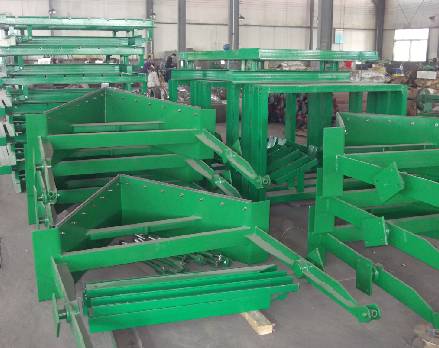 Afrikaans
Afrikaans  Albanian
Albanian  Amharic
Amharic  Arabic
Arabic  Armenian
Armenian  Azerbaijani
Azerbaijani  Basque
Basque  Belarusian
Belarusian  Bengali
Bengali  Bosnian
Bosnian  Bulgarian
Bulgarian  Catalan
Catalan  Cebuano
Cebuano  Corsican
Corsican  Croatian
Croatian  Czech
Czech  Danish
Danish  Dutch
Dutch  English
English  Esperanto
Esperanto  Estonian
Estonian  Finnish
Finnish  French
French  Frisian
Frisian  Galician
Galician  Georgian
Georgian  German
German  Greek
Greek  Gujarati
Gujarati  Haitian Creole
Haitian Creole  hausa
hausa  hawaiian
hawaiian  Hebrew
Hebrew  Hindi
Hindi  Miao
Miao  Hungarian
Hungarian  Icelandic
Icelandic  igbo
igbo  Indonesian
Indonesian  irish
irish  Italian
Italian  Japanese
Japanese  Javanese
Javanese  Kannada
Kannada  kazakh
kazakh  Khmer
Khmer  Rwandese
Rwandese  Korean
Korean  Kurdish
Kurdish  Kyrgyz
Kyrgyz  Lao
Lao  Latin
Latin  Latvian
Latvian  Lithuanian
Lithuanian  Luxembourgish
Luxembourgish  Macedonian
Macedonian  Malgashi
Malgashi  Malay
Malay  Malayalam
Malayalam  Maltese
Maltese  Maori
Maori  Marathi
Marathi  Mongolian
Mongolian  Myanmar
Myanmar  Nepali
Nepali  Norwegian
Norwegian  Norwegian
Norwegian  Occitan
Occitan  Pashto
Pashto  Persian
Persian  Polish
Polish  Portuguese
Portuguese  Punjabi
Punjabi  Romanian
Romanian  Russian
Russian  Samoan
Samoan  Scottish Gaelic
Scottish Gaelic  Serbian
Serbian  Sesotho
Sesotho  Shona
Shona  Sindhi
Sindhi  Sinhala
Sinhala  Slovak
Slovak  Slovenian
Slovenian  Somali
Somali  Spanish
Spanish  Sundanese
Sundanese  Swahili
Swahili  Swedish
Swedish  Tagalog
Tagalog  Tajik
Tajik  Tamil
Tamil  Tatar
Tatar  Telugu
Telugu  Thai
Thai  Turkish
Turkish  Turkmen
Turkmen  Ukrainian
Ukrainian  Urdu
Urdu  Uighur
Uighur  Uzbek
Uzbek  Vietnamese
Vietnamese  Welsh
Welsh  Bantu
Bantu  Yiddish
Yiddish  Yoruba
Yoruba  Zulu
Zulu Different Types of Conveyor Belt Rollers and Their Uses in Industries
Understanding the Types of Conveyor Belt Rollers
Conveyor systems are an essential element in material handling across various industries, contributing to efficiency and minimizing labor costs. At the heart of these systems are conveyor belt rollers, which play a crucial role in supporting the belt, facilitating smooth movement, and reducing friction. This article explores the different types of conveyor belt rollers, their functions, and their significance in an effective conveyor system.
The Importance of Conveyor Belt Rollers
Conveyor belt rollers are cylindrical components that support the conveyor belt while allowing it to move freely. They are designed to withstand heavy loads and environmental challenges, contributing to the longevity and reliability of a conveyor system. The choice of roller impacts not only the performance of the conveyor but also its maintenance and operational costs.
Types of Conveyor Belt Rollers
1. Idler Rollers Idler rollers are the most common type found in conveyor systems. They are installed along the path of the conveyor belt and do not drive the belt, but instead help support it. Idler rollers are essential for maintaining the tension and tracking of the belt. They can be categorized further into
- Flat Idlers These are typically used for transporting bulk materials and assist in keeping the belt flat. - Self-Aligning Idlers Designed to prevent the belt from misaligning, these rollers have a pivoting mechanism that helps realign the belt if it starts to drift.
2. Drive Rollers Drive rollers, as the name suggests, are responsible for driving the conveyor belt forward. They are powered by motors and provide the necessary torque to move the belt and its loads. The specifications for drive rollers can vary significantly based on the application, including
types of conveyor belt rollers

- Electric Drive Rollers These are commonly used in modern systems due to their efficiency and ease of control. - Belt Drive Rollers Utilized in applications where high torque is needed, belt drive rollers enhance the grip between the roller and the belt.
3. Return Rollers Return rollers are designed to support the underside of the conveyor belt as it returns to the loading point. They are essential for ensuring that the belt maintains its shape and reduces stress during the return phase. Return rollers can be flat or crowned, with crowned rollers helping to keep the belt centered.
4. Impact Rollers Impact rollers are specially designed to absorb the shock and impact of heavy materials being loaded onto the conveyor. They are typically installed at loading zones to protect the belt and other components from damage. The design of impact rollers often includes additional features like rubber or polyurethane sleeves to enhance their shock-absorbing capabilities.
5. Segmented Rollers Segmented rollers are designed with multiple segments that can rotate independently. This innovative design minimizes friction and wear, making them ideal for conveying materials over long distances or at high speeds. They also offer the benefit of easier maintenance, as individual segments can be replaced without having to replace the entire roller.
6. Specialized Rollers Depending on the specific industry or material being transported, various specialized rollers can be employed. These may include
- Coated Rollers Rollers coated with rubber or other materials to increase grip and reduce slippage. - Corrosion-Resistant Rollers Essential for environments exposed to chemicals or moisture, ensuring longevity and reliability.
Conclusion
Selecting the right type of conveyor belt roller is crucial for the efficiency and effectiveness of a conveyor system. Each type of roller serves a specific function, from supporting the belt to driving it forward and absorbing impact. By understanding the different types of rollers available, businesses can optimize their conveyor systems for peak performance, reduce maintenance costs, and enhance overall productivity. The investment in suitable conveyor belt rollers can lead to significant operational efficiency and longevity in material handling operations.
-
Revolutionizing Conveyor Reliability with Advanced Rubber Lagging PulleysNewsJul.22,2025
-
Powering Precision and Durability with Expert Manufacturers of Conveyor ComponentsNewsJul.22,2025
-
Optimizing Conveyor Systems with Advanced Conveyor AccessoriesNewsJul.22,2025
-
Maximize Conveyor Efficiency with Quality Conveyor Idler PulleysNewsJul.22,2025
-
Future-Proof Your Conveyor System with High-Performance Polyurethane RollerNewsJul.22,2025
-
Driving Efficiency Forward with Quality Idlers and RollersNewsJul.22,2025





























